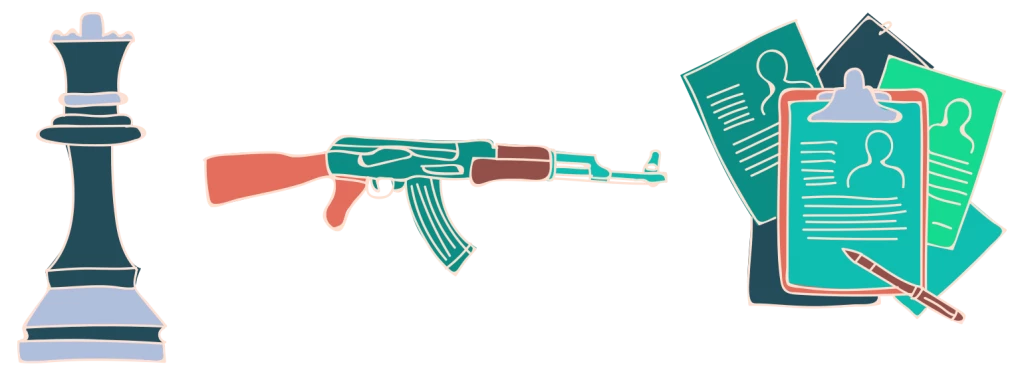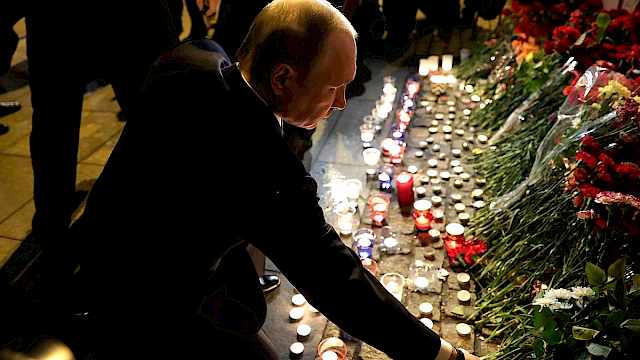Despite a recent increase in research into female involvement in political violence, this area continues to be limited to female perpetration of violent acts within terrorist groups.
My research examines female engagement in a broader range of roles, to consider those that do not require perpetration of violence. I also analyse a wider variety of extremist groups. Examples of such groups include Valkyria, an exclusively female Norwegian far-right group; Dukhtaran-e-Millat, the female wing of Jamaat-e-Islami; and Euskadi Ta Askatasuna (ETA) the Basque separatist group.
By ‘extremist’ groups, I include ‘terrorist’, ‘revolutionary’, and ‘guerrilla’ groups with a range of ideological perspectives, organisational structures, and internal cultures. I use a wide and varied range of case studies in order to maximise the potential of generalisable conclusions.
The lessons we can draw from these conclusions can be applied to female participation in future extremist groups, with the potential to inform domestic policy-making.
I also look at the gendering of extremism, as this influences how existing literature is framed. Implicitly gendering actors of violent extremism as male makes it more difficult to conceive of female participation.
The majority of research on this topic is framed by and thus reproduces this gendered perspective based upon male normalcy and the invisibility of women. Although female participation is often excluded from the research literature, this does not equate to an absence of women from extremist groups. Rather, women in many groups perform vital but ‘invisible’ roles that maintain and sustain the continued existence of a group.
Women are not limited to either ‘violent’ or ‘supportive’ binary roles
Through categorising and analysing the types of roles women perform I can compare the variety of roles across different groups. In contrast to previous research, I argue that women are not limited to either ‘violent’ or ‘supportive’ binary roles. As with male participation, female participation exists on a spectrum of numerous types of roles which require varying degrees of engagement and commitment. This spectrum includes roles ranging from translation to fundraising to recruiting new members.
Female engagement with roles is also not static. Women often engage in a number of different roles simultaneously, usually guided by group needs. As the needs of the group change, so too do the kinds of roles women perform. This change in roles is an evolutionary process influenced by numerous factors occurring internally and externally to the group, rather than a fixed, linear progression.
It is important to recognise this flexible engagement in multiple roles because this provides a more in-depth understanding of how women participate in extremism.

I am also interested in the variations in how women engage with a role (e.g. as a recruiter), based upon the specific character, culture, ideology, and structure of each group. The interaction of these factors influences the value a group ascribes to roles. Roles may be categorised in the same way across groups, but the performance of these roles differs qualitatively within each group. The functions or tasks that comprise a role vary resulting in roles being carried out in different ways. This influences both how women participate in extremism and what the role achieves for the group.
As my research develops, I will investigate the factors which influence and frame women’s engagement with extremist groups, focusing on four main issues:
- How ideas, beliefs, and values impact the assignment or choice of roles. So far, I have identified group ideology and commitment to traditional, patriarchal values as two factors which inform this, but I will expand upon these.
- How constructions of masculinity and femininity interact with each other and subsequently influence the types of roles both genders engage with.
- How group categorisation of an individual’s identity and perception of ‘status’ within the group affects female engagement. Gender identity influences who fulfils a role, especially if there are ‘core’ and ‘periphery’ groups present within the organisation.
- How gender interacts with characteristics such as ideology, organisational structure, and internal culture, and the effect understandings of gender have on the types of roles groups need to be enacted.
This research is important because it will add to our knowledge of the internal structures and dynamics of extremist groups, and the role of gender plays in them. Reconsideration of what constitutes ‘active’ involvement in an extremist group and who is considered to be an ‘active’ participant will be useful for seeking to understand these groups.
It will also help better inform how to engage with women in extremist groups and understand the potential threat they pose and what preventative action might be required.
Similarly, it could widen attention to women who may not act violently themselves, but whose actions support and enable other actors within groups to do so.
Copyright Information
As part of CREST’s commitment to open access research, this text is available under a Creative Commons BY-NC-SA 4.0 licence. Please refer to our Copyright page for full details.
IMAGE CREDITS: Copyright ©2024 R. Stevens / CREST (CC BY-SA 4.0)







